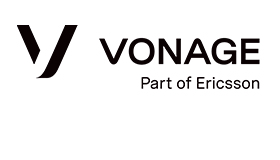Today’s ever-connected, increasingly informed customers demand access to services faster than ever before.
They also expect a seamless and consistent experience every time they contact your business, regardless of the channel.
NewVoiceMedia recently partnered with market research firm Opinion Matters to survey 1,018 people who work in contact centres.
The research reveals that businesses are failing to meet the current benchmark for customer expectations — largely because of a failure to invest in technology.
This poses two questions: Where are the biggest gaps between expectations and reality?
And, what can your business do to stop failing its customers as a result?
Below are six behaviours that can make your customer service strategy more successful.
Stop Expecting Your Customers to Explain the Same Thing to Multiple Agents
In NewVoiceMedia’s Serial Switchers research, we discovered that having to repeat information to multiple agents was one of the main reasons previously loyal customers felt compelled to switch to a competitor.
Despite this, 40 percent of the contact centre professionals we surveyed revealed that customers often need to repeat themselves to more than one agent.
Furthermore, respondents working for smaller companies were significantly more likely than average to refer customers to a colleague. With the potential cost of customers needing to repeat themselves being so damaging, empowering support agents to resolve issues the first time is key to success.
Start Helping Customers to Help Themselves
Speed tops the list of most modern consumers’ most important expectations. The days when it was acceptable to respond to a query within 24 hours are long gone; today’s consumers expect their problems to be solved in a timely fashion, no matter what industry your business operates in.
Interestingly, only slightly over a third (36%) of the respondents to our survey said their contact centres offered self-service options through IVR. Contact centres often field large volumes of calls for a relatively small pool of scenarios, therefore implementing self-service solutions is a simple yet effective way to improve customer service.
Deliver a Unified Omnichannel Experience
According to Google, 90% of multi-device owners switch between screens to complete tasks, using an average of three different machines daily. This means your customers shop across multiple channels, demanding a seamless experience every time they engage with your brand.
Omni-channel customer experience combines text, phone, social, email, instant messaging and more, allowing businesses to deliver the quality of service customers demand across multiple channels and devices. Unfortunately, we discovered that after switching channels, 21% of contact centre solutions are not able to connect customers with their previous contact.
Support Your Customers on Social Media
Customers will assume your business is on social media and when they get in touch via these channels, they will expect a swift response and high-quality service. The open nature of social media also offers consumers increased bargaining power with brands; if a customer leaves a complaint on your business’s Facebook or Twitter page, it’s there for the whole world to see.
Failing to address negative conversations on your social channels can damage your brand and hurt your profits. However, only 5% of our respondents consider social listening an important method for collecting customer feedback, revealing a major disconnect between what customers expect and what they experience.
Ask Customers for Feedback — Every Time
If businesses don’t know how customers perceive them, how can they meet their expectations? As a result, providing your customers with a platform to give feedback offers your business the perfect opportunity to ensure customers enjoy the best experience possible.
Nevertheless, only 50% of respondents to our survey said they always ask customers for feedback on customer service. What’s more, only 8% of businesses know their Net Promoter Score (NPS); a metric used to gauge loyalty by calculating how likely customers are to recommend a business to a friend or colleague.
Invest in New Technology to Keep up with Customer Expectations as They Evolve
Our research highlights that many businesses are failing to optimise their contact centres with technology that could help meet growing customer expectations.
As little as 10 years ago, a contact centre manager’s primary concern was managing call volumes. Today, the typical service agent is required to manage a complicated mix of calls, email, instant messages, social media, video chat and more.
Cloud contact centre solutions offer easy integration with existing systems and a wide range of features that help businesses stay ahead of the curve. Intelligent call-routing, self-service IVR and computer telephony integration (CTI) significantly reduce the effort it takes to get customers the answers they need, eliminating the tedium of repetition, the frustration of navigating complex menus and the pain of being passed around.
Additionally, contact centre technology can capture powerful insights from the conversations sales and service teams are having with customers. Not so long ago, phone conversations were an untapped source of customer information. But features like NewVoiceMedia’s Conversation Analyzer allow customers to effectively “listen” to all conversations and transcribe those, capturing that intelligence and combining it with other CRM data.
For more on the topics discussed in this article, follow the link to download NewVoiceMedia’s white paper: How Businesses Are Failing Their Customers.
For more information about Vonage - visit the Vonage Website
Call Centre Helper is not responsible for the content of these guest blog posts. The opinions expressed in this article are those of the author, and do not necessarily reflect those of Call Centre Helper.
Author: Vonage
Published On: 10th Aug 2018 - Last modified: 14th Aug 2018
Read more about - Guest Blogs, Vonage






 Vonage is redefining business communications, helping enterprises use fully-integrated unified communications, contact centre and programmable communications solutions via APIs.
Vonage is redefining business communications, helping enterprises use fully-integrated unified communications, contact centre and programmable communications solutions via APIs. 






























